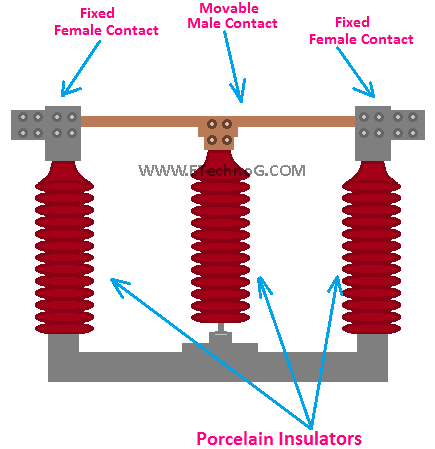Insulator, Semiconductor, Conductor Examples, Applications
In this article, we are going to know conductor examples, insulator examples, and semiconductor examples, and their properties, and applications. According to the ability of electric current conduction, materials are divided into three types - 1. Conductor 2. Semiconductor and 3. Insulator. All of them have different characteristics and properties. The main difference between conductors, insulators, and semiconductors lies in their electrical conductivity properties. Conductors allow easy flow of current or electricity, whereas insulators prevent the flow of electricity, and semiconductors have intermediate conductivity that can be modified.
What is a Conductor?
A conductor is an object or type of material that allows the flow of current through it in any direction. An ideal conductor has no resistance or it does not oppose the flow of current. But in practice, there is no ideal conductor. All the conductors have internal resistance but it is very low.
Conductor Properties or Characteristics
1. Conductor allows the flow of current in any direction.
2. Conductor does not oppose the flow of current.
3. The current conduction properties of a conductor does not affect by temperature or other physical conditions.
4. The voltage-current characteristics of a conductor are linear.
5. Generally conductors are bidirectional, bilateral in nature.
Conductor Examples
Here, some common examples of Conductor(Metalic) are,
- Gold
- Silver
- Copper
- Aluminium
- Steel
- Iron
An example of a non-metalic conductor is Graphite.
Examples of liquid conductors are Sea Water, Solutions of Acid, Salt Water, etc.
Conductor Applications
Conductors such as copper and aluminum are used in the manufacturing of electric wires, motor coils, transformer coils, etc. Non-metallic conductors such as graphite carbons are used for battery electrodes. Hard conductive metal such as iron is used for transformer core, motor core, etc. Conductive rods and pipes such as Galvanized Rods, pipes, Aluminium Rods, and pipes are used for electrical earthing purposes.
What is Semiconductor?
A semiconductor is an object or a type of material whose conductivity varies between a pure conductor and an insulator. That means it neither allows the flow of current in higher magnitude nor fully blocked the flow of current through it.
Semiconductor Properties or Characteristics
1. Semiconductor does not allow the flow of current in higher magnitude in normal conditions like a conductor.
2. Semiconductor does not fully block the current like an insulator.
3. The resistance or current conduction property of a semiconductor is varying or changes with the changing of temperature or other physical conditions. Generally, the resistance of a semiconductor is decreasing with the increase of temperature and vice-versa.
4. The voltage-current characteristics of a semiconductor are non-linear.
5. Most of the semiconductor devices are unidirectional and unilateral in nature.
Semiconductor Examples
Some common examples of semiconductor material are,
- Silicon
- Germanium
- Gallium Arsenide
- Indium Phosphide (InP)
- Organic Semiconductors
- Silicon Carbide (SiC)
Semiconductor Applications
Semiconductor materials are used for the manufacturing of electronic active components such as Transistors, Solar Cells, SCR(Silicon Controlled Rectifier), Diodes, etc.
What is Insulator?
An insulator is an object or type of material that cannot conduct the electric current. An ideal insulator can fully block the electrical current there should be no leakage current.
Insulator Properties or Characteristics
1. Insulator is not capable to conduct current.
2. The insulating property of an ideal insulator is not changed in any physical conditions such as temperature or high electric pressure.
3. As the insulator is not capable to conduct current, so there is no concept of voltage-current characteristics.
Insulator Examples
The common examples of insulators are,
- Wood
- Rubber
- Glass
- Porcelain
- Plastics
- Ceramics
Insulator Applications
Insulators are used for electrical insulation or isolation purpose such as the porcelain materials are used in electrical poles to isolate the electrical conductors from the metal poles. Varnish is used for the insulation of motor coils, transformer coils, etc.
Read Also:

